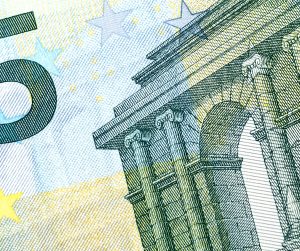
It is so important to find the best pricing for your product. It is important to avoid setting price point too high, and equally important not to set them too low. Too few or too many pricing points leads to customer confusion and fatigue. Read on to learn how to price without guesswork.
Here’s the bad news – nobody magically knows the right price. Instead you have to go out there and discover it. Here’s the good news – there is a definite science and approach that gives you the right answer.
You sit face to face with a potential client and you ask them about price. But there’s an important factor. You have to put the client in a different state of mind so that they are not thinking about how much they have to pay – but rather how they perceive the value of your product. You do this by asking four questions as suggested by Peter Van Westendorp. At which price point would your product be:
- Too cheap to have faith in / you wouldn’t trust it
- A bargain worth paying for
- Expensive enough to seem reliable or
- Too expensive to purchase.
Let’s take the first question as an example. Here you are really asking ‘at what price would you feel uncomfortable that it is so low’. It is about their feelings. And so are the other questions. It is about what price points they say feel too high or too low or good value. You will find out what they feel is ‘too cheap’, ‘too expensive’, ‘rather expensive’ and ‘good value’.
You might encounter a situation where the customer struggles to actually give you a figure for question 1. If that happens, rephrase it like this “if you were to propose this solution to your boss, or partner or colleague but with a low price, what price do you think they would find a bit objectionable”. Switching the question to what price is too low for your boss/colleague can be helpful for people who feel a little shy about suggesting the value of your product themselves.
The Buying Process
But that’s only part of the puzzle. Particularly in a B2B context, the purchasing of a product can be very complex and involve other factors which you should also dive into:
- How does the buying process work, and what are any limit for additional approval
- What are the alternatives you use today
- How would they pitch the business case to their boss?
- Are there price thresholds where the purchase becomes more complex (e.g. part of an official procurement process)
Perceived End User Benefits
- How do the customer see value – can they describe the ROI of having this product?
- What would be the risks of not buying
It is important to think a bit about the ROI (return on investment) that the client can achieve. This is often the key to achieving your status as a ‘premium product’ – or one that can charge quite a high price. When Ash Maurya developed an analytics tool called Kiss Metrics, he was addressing problems that people couldn’t solve with Google Analytics. Competitors charge $9-29 a month, but KissMetrics was priced at $200 per month. Once framed as less than half the cost of a software engineer’s day rate, this seems cheap however. The benefit is that you don’t need a technical team to spend weeks on a customised solution.
The OutsourcingHub is a platform that matches clients who want to outsource with the best matched providers. Although ostensibly selling a PDF report and the ability to interact with providers in a way that saves hours and hours of work, the real benefit is that you avoid choosing a badly-matched provider to give that $5 million a year contract to. The benefit is that the employees of this company don’t have years of dealing with the fallout of a poorly performing provider. When framed in this way, the price of searching on OutsourcingHub is remarkably good value for the benefits.
So it’s important to ask the customer what are the benefits? It could be something like less risk, extra security, better audit trail, feeling that their wife is safe, not having to spend hours on an annoying task, feeling happy – anything at all. If the customer can put this into words, then you can have conversations around what value that has. Or what value something bad being avoided has. And then that becomes a pricing input.
Perception and Price are linked
Later on, this also becomes part of what you need to do well when you “tell your story”. When customers find you on Google and click on your landing page, what are you telling them? If people are buying off you when you get them on the phone, but not when they land on your website, that is because you talk about them on the phone but talk about product features on the website, most likely. These two are linked – telling a story well or selling well could easily mean that you can charge ten times for the same product. So one is not independent of the other. And if some customers are telling you they will pay a high price because they value benefit X, then you better be listening carefully….
As a closing remark, let me suggest that you can always start with a ‘good’ pricing and then edge it up over time. But when getting started, you want that proof that customers will buy and at a price that enables you to get to profitable in a reasonable time. These questions will be an excellent start..
Here is some further reading:
5 Psychological Studies on Pricing